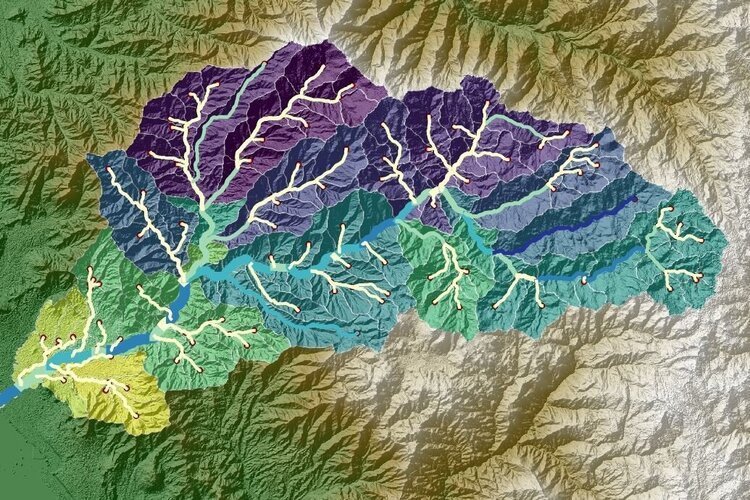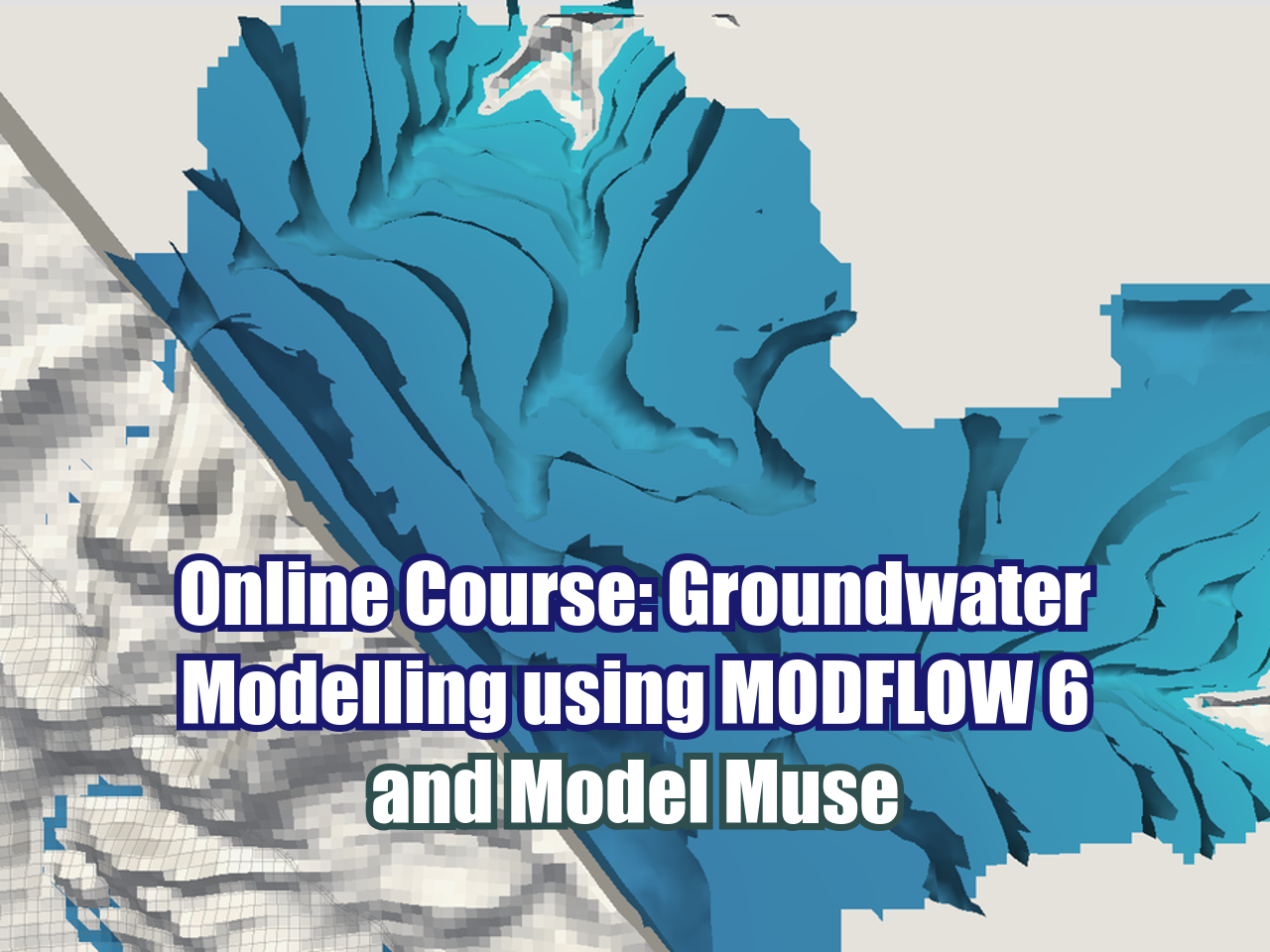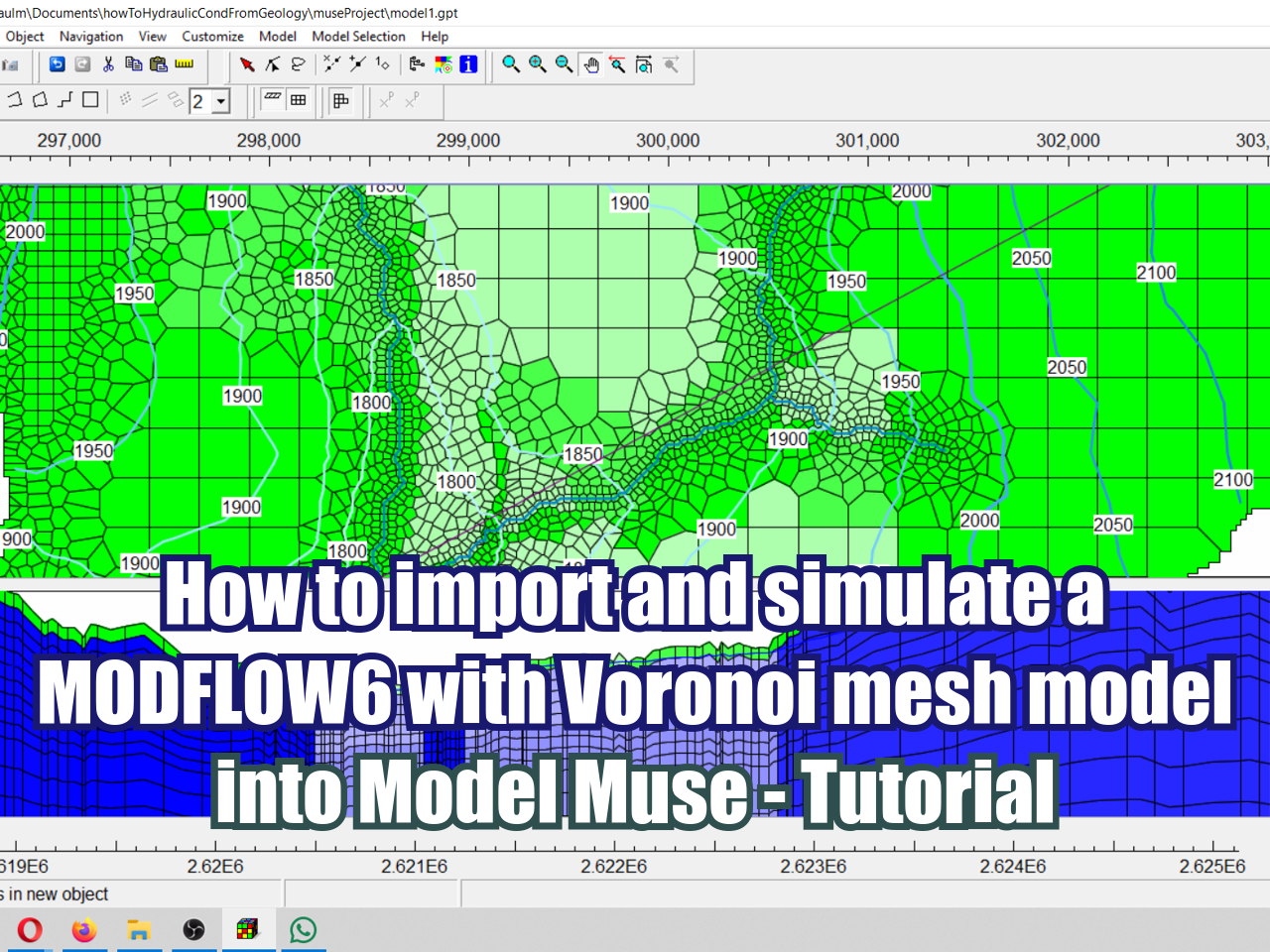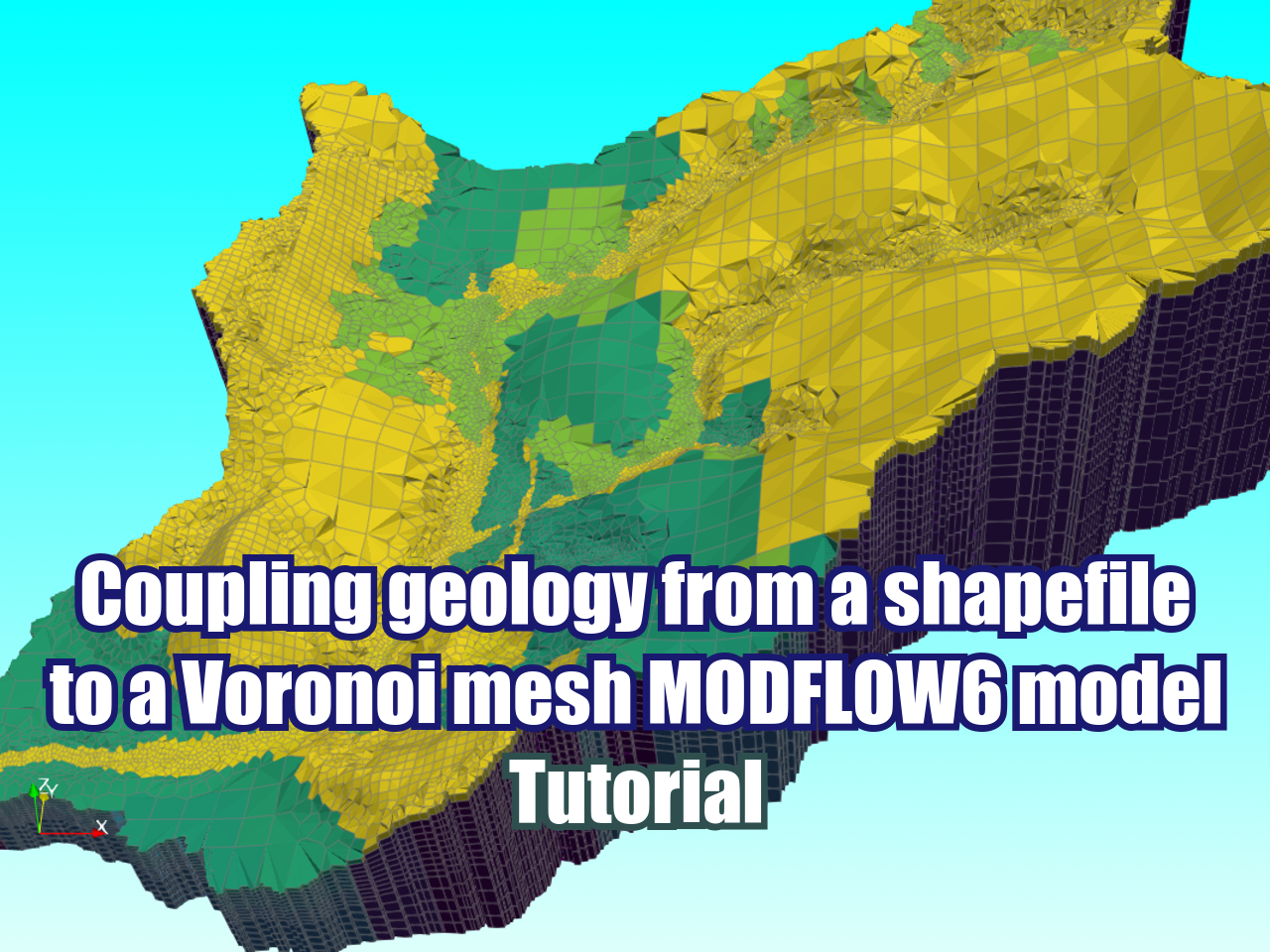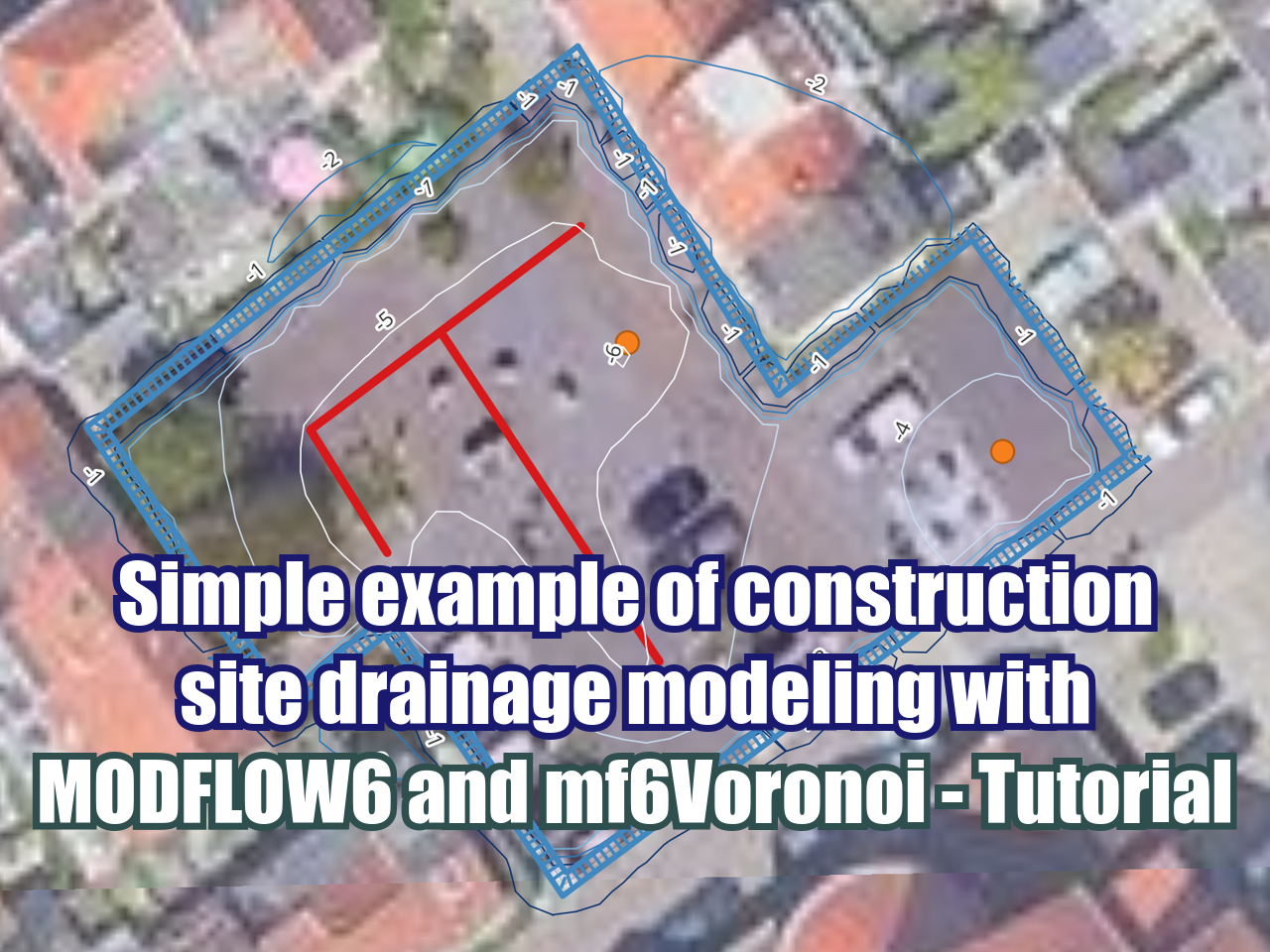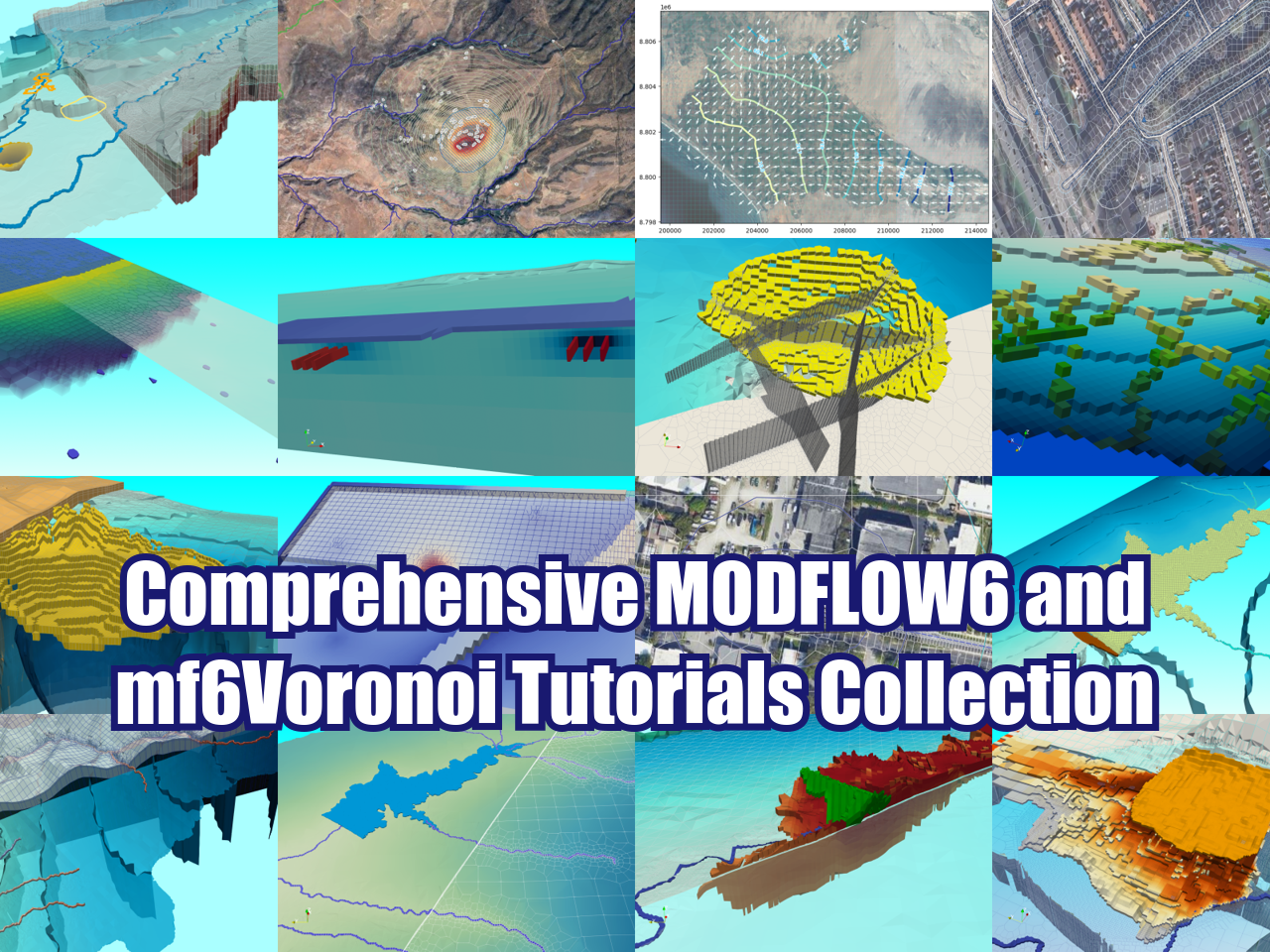Determination of the Depression Cone from an Open Pit with MODFLOW6, Flopy and mf6Voronoi - Tutorial
/One of the key objectives from groundwater modeling in mining is the determination of pit inflows and the extension of the depression cone. This tutorial shows an applied case of determination of a depression cone from an open pit model built with MODFLOW6, Flopy and mf6Voronoi. The model has faults and the tutorial covers all steps from model import, data processing and export of geospatial data from the depression cone.
This tutorial is based on this other tutorial:
Tutorial
Code
#Vtk generation
import flopy ## Org
import rasterio
from rasterio.plot import show
from mf6Voronoi.tools.graphs2d import generateRasterFromArray, generateContoursFromRasterC:\Users\saulm\anaconda3\Lib\site-packages\geopandas\_compat.py:7: DeprecationWarning: The 'shapely.geos' module is deprecated, and will be removed in a future version. All attributes of 'shapely.geos' are available directly from the top-level 'shapely' namespace (since shapely 2.0.0).
import shapely.geos# load simulation
simName = 'mf6Sim' ## Org
modelName = 'mf6Model' ## Org
modelWs = 'modelFiles' ## Org
sim = flopy.mf6.MFSimulation.load(sim_name=modelName, version='mf6', ## Org
exe_name='bin/mf6.exe', ## Org
sim_ws=modelWs) ## Orgloading simulation...
loading simulation name file...
loading tdis package...
loading model gwf6...
loading package disv...
loading package ic...
loading package npf...
loading package sto...
loading package rch...
loading package evt...
loading package drn...
loading package oc...
loading solution package mf6model...#list model
sim.model_names['mf6model']#get gwf
gwf = sim.get_model('mf6model')headObj = gwf.output.head() ## Org
headObj.get_kstpkper() ## Org[(0, 0), (0, 1), (0, 2), (0, 3), (0, 4), (0, 5)]heads0 = headObj.get_data(kstpkper=(0,0)) ## Org
heads5 = headObj.get_data(kstpkper=(0,5)) ## OrgwaterTable0 = flopy.utils.postprocessing.get_water_table(heads0) ## Org
waterTable5 = flopy.utils.postprocessing.get_water_table(heads5) ## Orgwt0Path = 'output/waterTable0.tif'
wt5Path = 'output/waterTable5.tif'
generateRasterFromArray(gwf, waterTable0,
rasterRes=10, epsg=32612,
outputPath=wt0Path,
limitLayer='shp/catchment.shp')
generateRasterFromArray(gwf, waterTable5,
rasterRes=10, epsg=32612,
outputPath=wt5Path,
limitLayer='shp/catchment.shp')Raster X Dim: 13256.95, Raster Y Dim: 9903.42
Number of cols: 1325, Number of rows: 990
Raster X Dim: 13256.95, Raster Y Dim: 9903.42
Number of cols: 1325, Number of rows: 990wt0 = rasterio.open(wt0Path)
show(wt0)<Axes: >wt0Clip = rasterio.open('output/waterTable0_clip.tif')
show(wt0Clip)depressionArray = waterTable5 - waterTable0
depressionPath = 'output/depression.tif'
generateRasterFromArray(gwf, depressionArray,
rasterRes=10, epsg=32612,
outputPath=depressionPath,
limitLayer='shp/catchment.shp')Raster X Dim: 13256.95, Raster Y Dim: 9903.42
Number of cols: 1325, Number of rows: 990generateContoursFromRaster('output/depression.tif',5,
'output/depressionContours.shp')Input data
You can download the input data from this link:
owncloud.hatarilabs.com/s/dYnmmUm3byXxMe4
Password to download data: Hatarilabs







